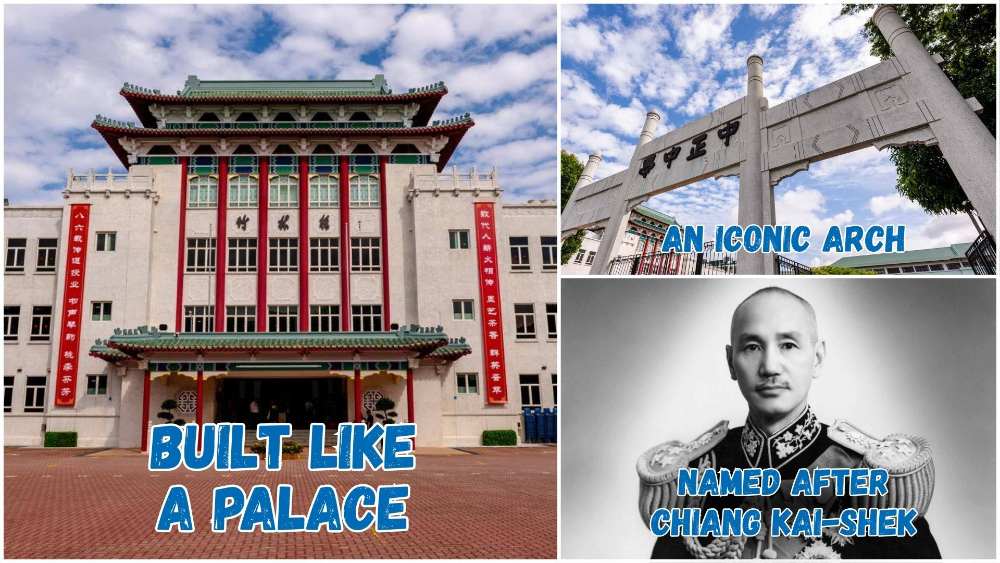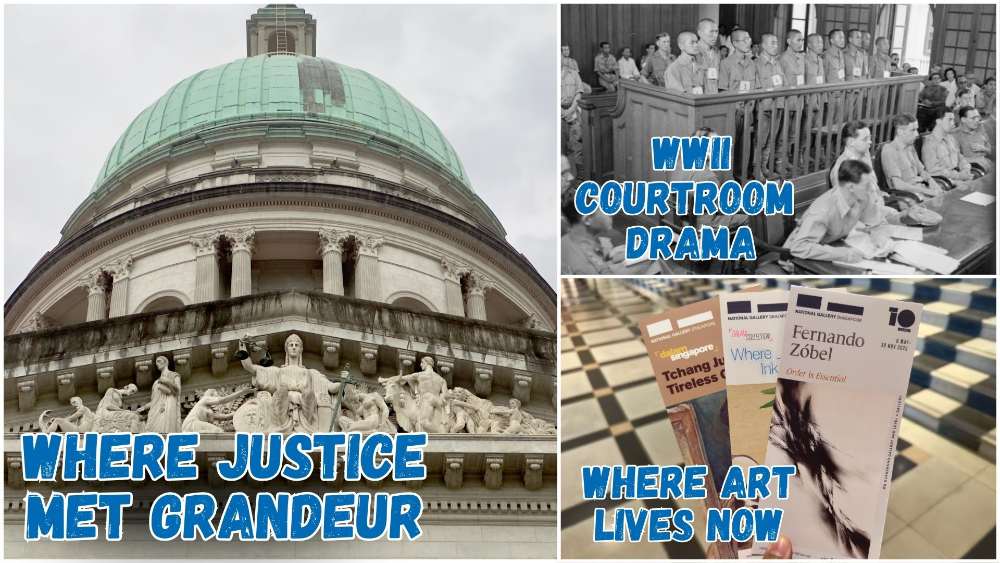History, But Make It Grand - This School Has A National Monument On Its Grounds
What is a National Monument? Who gazettes them? How many national monuments are there in Singapore? To date, the Preservation of Sites and Monuments, a division of National Heritage Board, has identified and gazetted 77 buildings, structures and sites of national significance as an integral part of Singapore’s built heritage.
And we're here to tell you all about them - one National Monument at a time!
You've probably passed by or stepped into more than a few of them without realising they were National Monuments: Al-Abrar Mosque, Asian Civilisations Museum, the Civilian War Memorial, Saint Andrew's Cathedral, the Esplanade Park Memorials, Fort Siloso on Sentosa - no need to plan an itinerary for friends visiting from overseas; just show them this article ✌️
In this edition, we put under the magnifying glass one of Singapore's oldest Chinese schools, Chung Cheng High School (Main).
📍 Location
The entrance arch and administration building of Chung Cheng High School (Main) were collectively gazetted as the 66th National Monument. The nearest MRT stations are Dakota and Tanjong Katong.
📅 Significant dates
Date built:
- 24 Jan 1939: Chung Cheng High School was founded on Kim Yam Road
Milestones:
- 1947: Chung Cheng High School began admitting female students due to a surge in Singapore's student population after the end of World War II (1939-1945)
- 19 Sep 1965: The foundation stone for the administration building at Chung Cheng High School (Main) was laid
- 2014: The school celebrated its 75th anniversary; its entrance arch and administration building were collectively gazetted as Singapore's 66th National Monument
Date collectively gazetted: 10 Jul 2014
📜 History
Founded on 24 Jan 1939, Chung Cheng High School began as an all-boys school on Kim Yam Road. At the time, government funding favoured English-medium schools, leaving Chinese schools with little support. A group of well-known Chinese philanthropists, recognising the lack of higher education facilities in Singapore, came together to establish the new Chinese school.
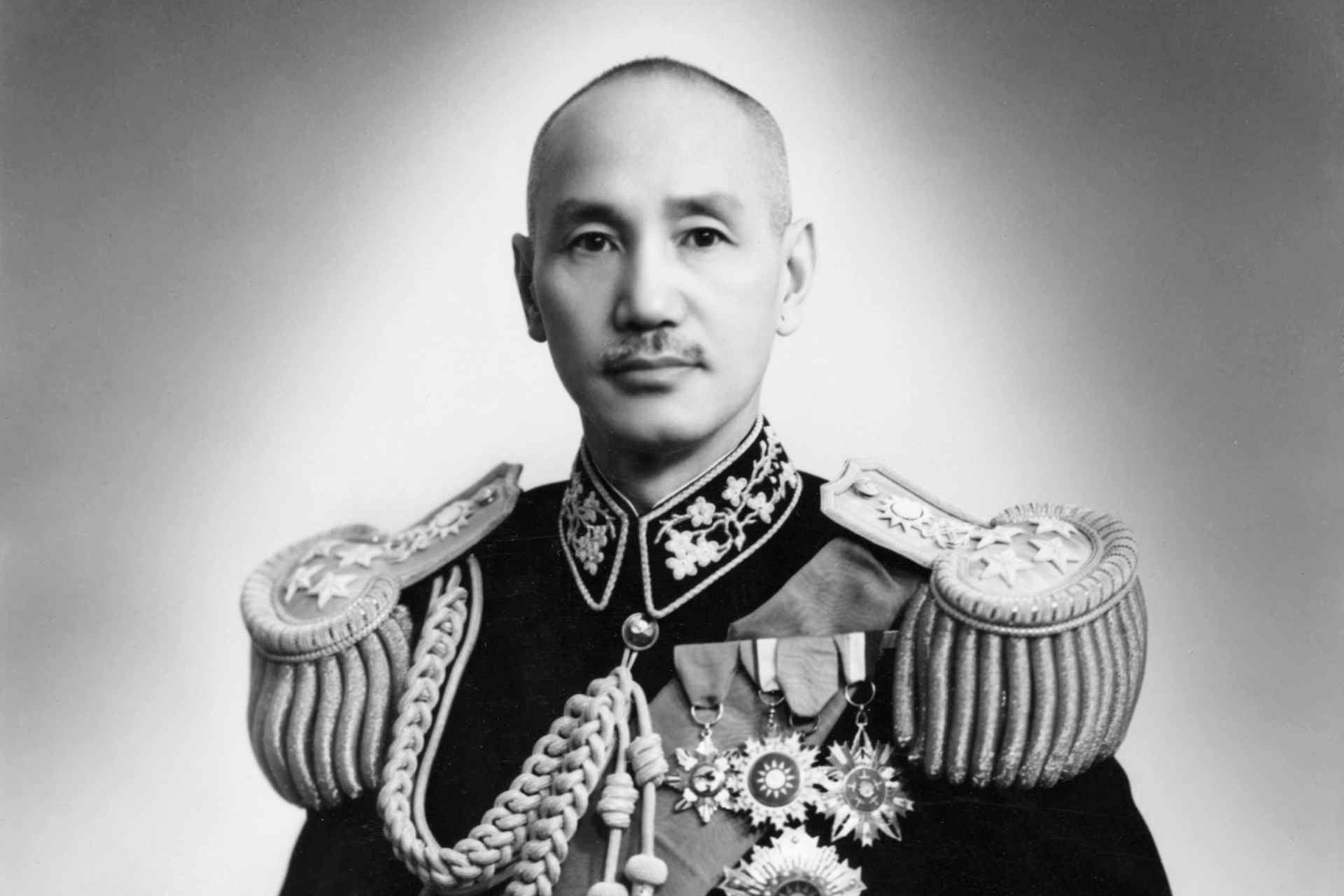 The school was named after Chinese Nationalist leader Chiang Kai-shek. | IMAGE: WIKIMEDIA COMMONS
The school was named after Chinese Nationalist leader Chiang Kai-shek. | IMAGE: WIKIMEDIA COMMONS
It was named after Chiang Kai-shek (Chiang Chung-cheng in Standard Chinese), the leader of the Chinese Nationalist Government, who later became president of the Republic of China (known today as Taiwan) from 1948 to 1975. The school’s founding committee also included other notable figures, such as Aw Boon Haw (known for establishing Haw Par Villa), and Lim Bo Seng, who later became a war hero, and a memorial was built to commemorate his heroism.
The school temporarily ceased operations during the Japanese Occupation (1942-1945) but saw a surge in enrolment after the war. In 1947, it began admitting female students, becoming Singapore's first co-educational Chinese school.
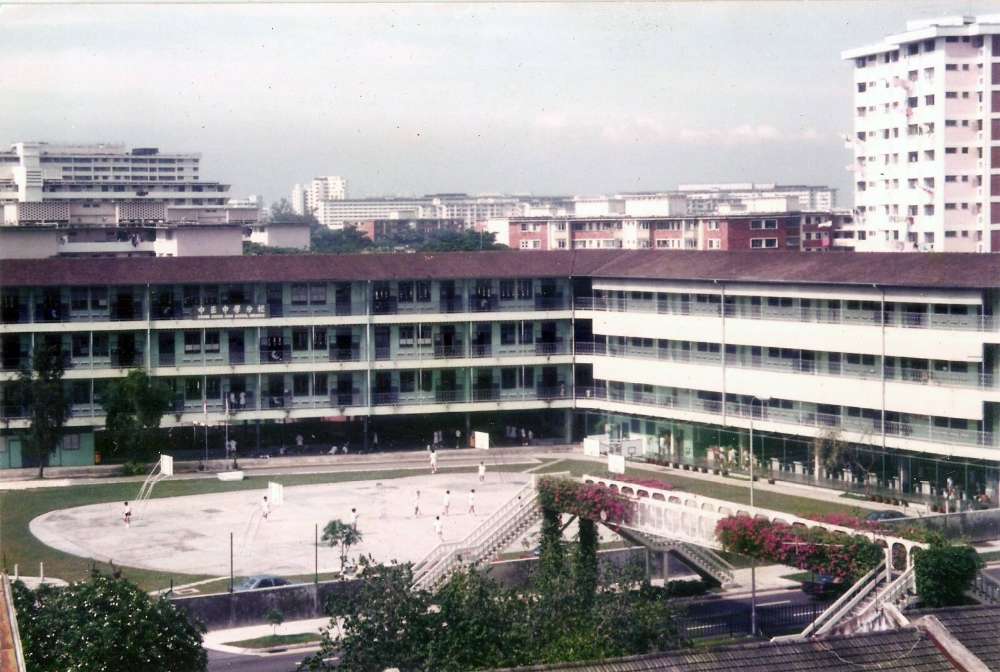 Chung Cheng High School (Branch) in the 1980s. | IMAGE: WIKIMEDIA COMMONS/@LYG 2001
Chung Cheng High School (Branch) in the 1980s. | IMAGE: WIKIMEDIA COMMONS/@LYG 2001
To accommodate the growing student body, a new campus was established on Goodman Road, named Chung Cheng High School (Main), while the original campus became Chung Cheng High School (Branch) and eventually relocated to Yishun, where it is known today as Chung Cheng High School (Yishun).
In 1962, the management committee of Chung Cheng High School (Main) initiated a fundraising campaign for a new administration building at the Goodman Road campus. Three years later, construction began, and then-chairman of the Management Committee, Goh Tjoei Kok, laid the foundation stone on 19 Sep 1965.
The administration building, completed in 1968, provided modern facilities such as a library, laboratories, and an auditorium that was the largest in Singapore at the time, with a seating capacity of 2,000. An impressive entrance arch was also erected.
Singapore's first Prime Minister Lee Kuan Yew officially opened the building on 21 Jul 1968.
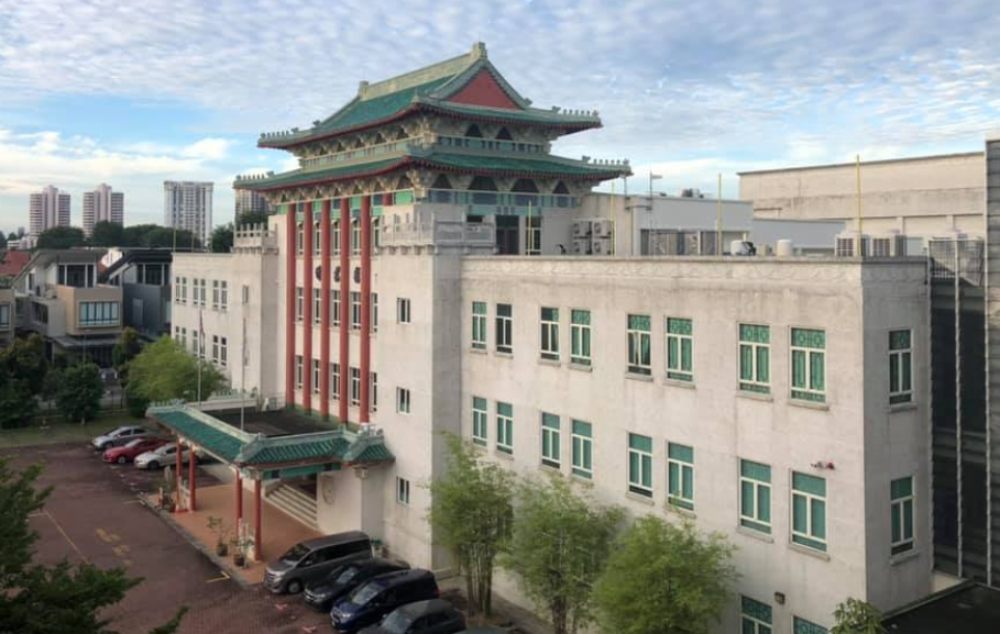 IMAGE: FACEBOOK/@CHUNG CHENG HIGH SCHOOL – MAIN
IMAGE: FACEBOOK/@CHUNG CHENG HIGH SCHOOL – MAIN
📐 Design and architecture
Designed by alumnus Ho Beng Hong, the administration building reflects a blend of traditional Chinese elements with modern architecture. Its design features include a prominent double-tier Chinese roof, a façade embellished with cloud patterns and bat motifs, and abstract figures of mythical creatures known as 仙人走兽 (xian ren zou shou) decorate the roof eaves.
The octagonal ground-level windows display the stylised Chinese character "禄" ("lu"), meaning "prosperity", and traditional green-glazed tiles cover the rooftops.
The building, named Zhulin Building in honour of founding principal Dr Chuang Chu Lin, also bears a calligraphic inscription by acclaimed artist Lim Tze Peng, also an alumnus of the school.
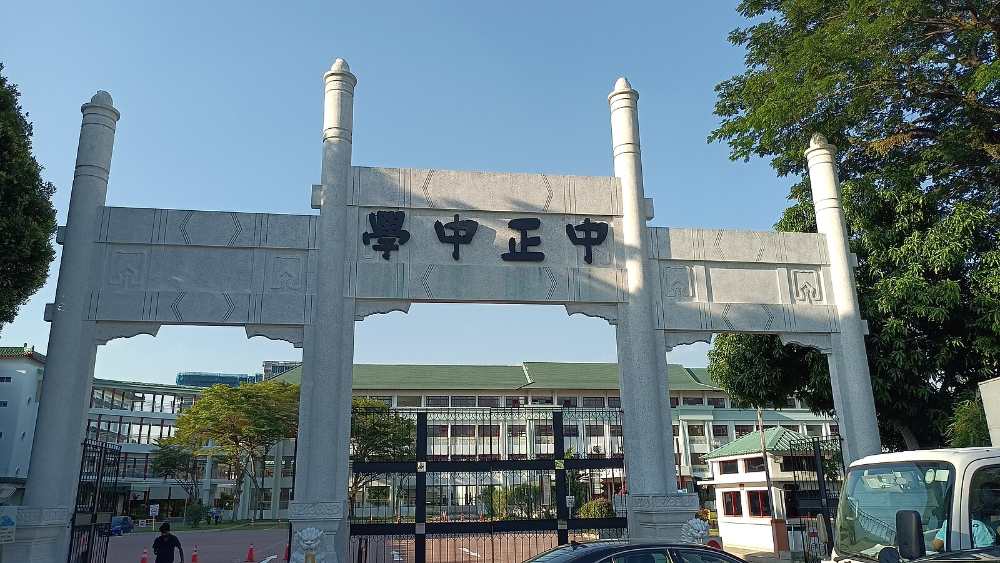 IMAGE: WIKIMEDIA COMMONS/@GOAHEADFAN95
IMAGE: WIKIMEDIA COMMONS/@GOAHEADFAN95
The entrance arch features the name of the school in bold characters, and is adorned with stylised motifs of bats symbolising good fortune. It marks the path towards the administration building, symbolising the students’ journey towards higher education.
For the latest updates on Wonderwall.sg, be sure to follow us on TikTok, Telegram, Instagram, and Facebook. If you have a story idea for us, email us at [email protected].


